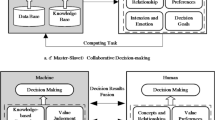Abstract
A Cognitive Radio is an intelligent wireless communication arrangement that is conscious of its surrounding environment, and has ability to learn from the situation and adapt its internal states to deviation in the incoming RF stimuli by making corresponding changes in certain operating parameters (e.g., transmit-power, carrier frequency, and modulation strategy) in real-time. The cognitive engine greatly contributes towards a smart radio. As part of the process, the radio observes, orients, takes decisions and evaluates the outcomes of decisions taken which is part of the learning phase. There are a variety of learning techniques enabling prediction of various operating parameters. This paper presents investigation of different learning algorithms travelling from supervised to unsupervised, applied to the problem of prediction of throughput and data rate and a comparison amongst them paving way towards predictive modeling. These learning algorithms can be incorporated into the cognitive cycle enabling spectrum allocation according to the learning done. It is shown that the unsupervised algorithms are most flexible, adaptable while supervised are more reliable and accurate. All algorithms are compared on basis of percentage of correct predictions and Root Mean Square Error (RMSE). In future, these algorithms are to be integral part of cognitive engine in large scale, leading to intelligent spectrum management and allocation and hence a smart radio.



















Similar content being viewed by others
References
Ruslan, R. & Wan, T.-C. (2008). Learning ability in cognitive radio, Proceedings International Conference on Network Applications, Protocols and Services 2008 (NetApps 2008), Sintok, Malaysia, November 21–22.
Sharma, V. & Bohara, V. A. (2014). Exploiting machine learning algorithms for cognitive radio, Proceedings of of International Conference on Advances in Computing, Communications and Informatics (ICACCI), Greater Noida, Delhi, India.
Bkassiny, M., Li, Y., & Jayaweera, S. K. (2013). A survey on machine-learning techniques in cognitive radios. IEEE Communications Surveys & Tutorial, 15(3), 1136–1159.
Huang, Y., Wang, J. & Jiang, H. (2010). Modeling of learning inference and decision-making engine in cognitive radio, IEEE Second International Conference on Networks Security, Wireless Communications and Trusted Computing (pp. 258–261).
Gavrilovska, L., Atanasovski, V., Macaluso, I., & DaSilva, L. A. (2013). Learning and reasoning in cognitive radio networks. IEEE Communications Surveys & Tutorials, 15(4), 1761–1777.
Xu, Y., Anpalagan, A., Wu, Q., Shen, L., Gao, Z., & Wang, J. (2013). Decision-Theoretic Distributed Channel Selection for Opportunistic Spectrum Access: Strategies, Challenges and Solutions. IEEE Communications Surveys & Tutorials, 15(4), 1689–1713.
Xu, Y., Wang, J., Wu, Q., Anpalagan, A. & Yao, Y.-D. (2012). Opportunistic spectrum access in unknown dynamic environment: A game-theoretic stochastic learning solution. IEEE Transactions on Wireless Communications, 11(4), 1380–1391.
Xu,Y., Wang, J., Wu, Q., Anpalagan, A. & Yao, Y.-D. (2012). Opportunistic spectrum access in cognitive radio networks: Global optimization using local interaction games. IEEE Journal of Selected topics in Signal Processing, 6(2), 180–193.
Smith, P. J., Dmochowski, P. A., Suraweera, H. A., & Shafi, M. (2013). The effects of limited channel knowledge on cognitive radio system capacity. IEEE Transactions on Vehicular Technology, 62(2), 927–933.
Tekin, C., Hong, S. & Stark, W. (2009). Enhancing cognitive radio dynamic spectrum sensing through adaptive learning, Military Communications Conference. MILCOM 2009. IEEE (pp. 1–7).
Taherpour, A., Gazor, S., & Taherpour, A. (2010). Adaptive spectrum sensing and learning in cognitive radio networks. 18th European Signal Processing Conference (EUSIPCO-2010), Aalborg, Denmark, August 23–27.
Yau, K.-L. A., Komisarczuk, P. & Teal, P. D. (2010). Context-awareness and intelligence in distributed cognitive radio networks: A reinforcement learning approach. In Communications Theory Workshop (AusCTW), 2010 Australian (pp. 35–42). IEEE.
Rondeau, T. W., Le, B., Rieser, C. J., & Bostian, C. W. (2010). IEEE International Conference on Communications (ICC), Cognitive Radio with Genetic Algorithms.
Dongi, X., Lii, Y., Wui, C. & Cai, Y. (2010). A learner based on neural network for cognitive radio. 12th IEEE International Conference on Communication technology (ICCT), 893–896.
Yin, L., Yin,S. X., Hong, W., & Li, S. F. (2011). Spectrum behavior learning in cognitive radio based on artificial neural network, Military Communication Conference, Track 1, Waveforms and Signal Processing, IEEE.
Zhang, Z. & Xie, X. (2007). Intelligent cognitive radio: Research on learning and evaluation of CR based on neural network, ITI 5th International Conference on Information and Communications Technology, ICICT 2007.
Tsagkaris, K., Katidiotis, A., & Demestichas, P. (2008). Neural network-based learning schemes for cognitive radio systems. International Journal on Computer Communication, 31, 3394–3404.
Katidiotis, A., Tsagkaris, K., & Demestichas, P. (2010). Performance evaluation of artificial neural network-based learning schemes for cognitive radio systems. Computers & Electrical Engineering, 36(3), 518–535.
Hiremath, S. & Patra, S. K. (2011). Transmission rate prediction for cognitive radio using adaptive neural fuzzy inference system. Military Communications Conference 2011, MILCOM 2011, November 7–10.
Tsagkaris, K., Bantouna, A., & Demestichas, P. (2012). Self-Organizing Maps for advanced learning in cognitive radio systems. Elsevier, International Journal on Computers and Electrical Engineering, 38, 862–881.
Author information
Authors and Affiliations
Corresponding author
Rights and permissions
About this article
Cite this article
Venkatesan, M., Kulkarni, A.V.K. Comparative Performance Investigation of Supervised and Unsupervised Learning Outlines applied in Cognitive Radio Systems. Wireless Pers Commun 91, 1393–1417 (2016). https://doi.org/10.1007/s11277-016-3534-z
Published:
Issue Date:
DOI: https://doi.org/10.1007/s11277-016-3534-z




